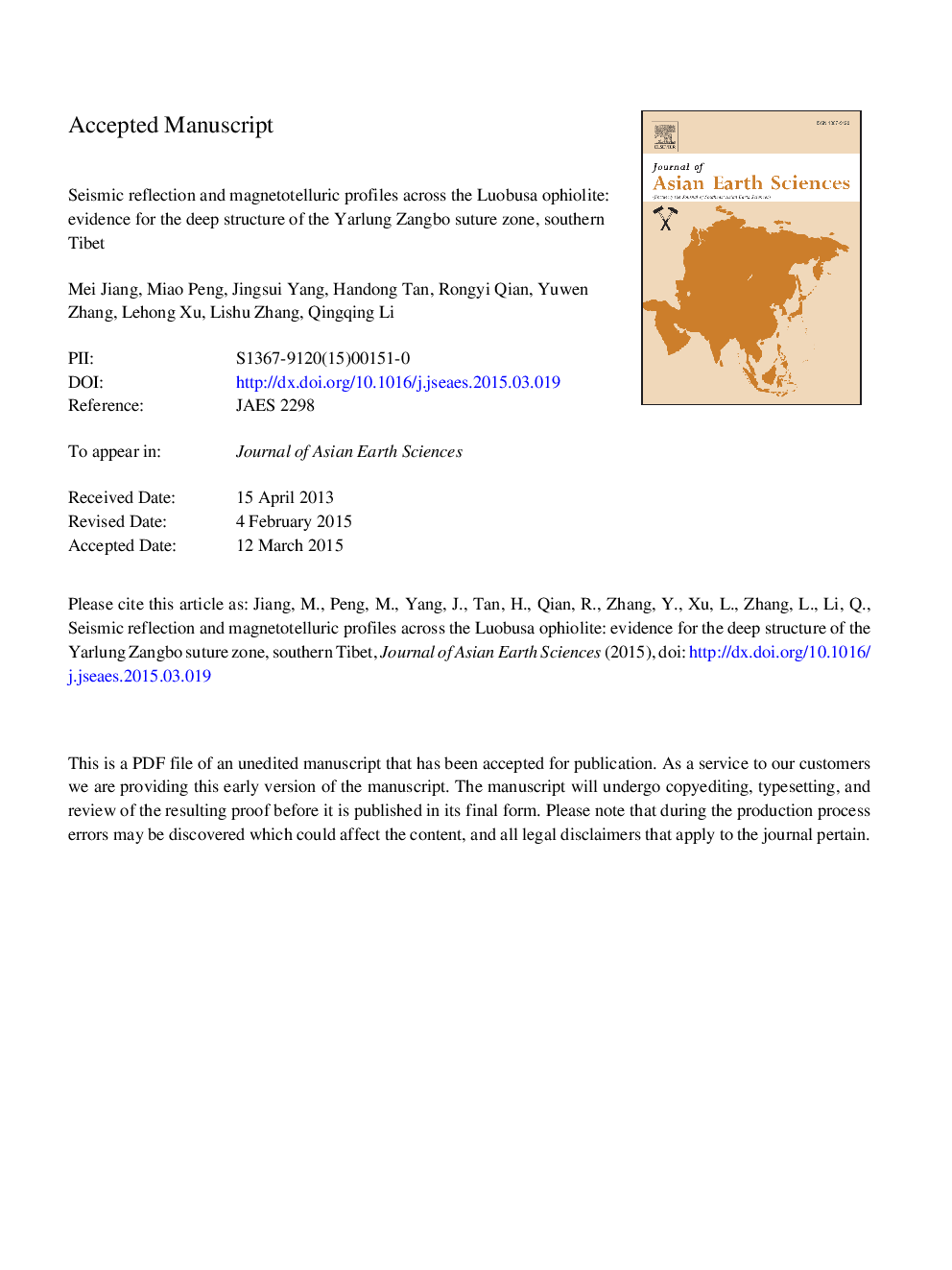| Article ID | Journal | Published Year | Pages | File Type |
|---|---|---|---|---|
| 6444092 | Journal of Asian Earth Sciences | 2015 | 26 Pages |
Abstract
The Luobusa chromite mine in Tibet, the largest chromite deposit discovered in China to date, is hosted in the Luobusa ophiolite in the eastern section of the Yarlung Zangbo suture zone. A combined seismic reflection and magnetotelluric survey was carried out on the mantle peridotites in which the chromitite deposits occur in order to investigate their origin and to prospect for other deposits in the area. The survey indicates that the Luobusa chromitite-bearing ultramafic block is a tectonic slice thrust onto the southern margin of the Gangdese batholith by multiple south-dipping faults. The maximum thickness of the ultramafic rock mass is 4Â km, and it is underlain by the upper crust of the Indian Plate. Low-resistivity bodies in the upper crust of the Luobusa area lie at a depth of up to 5Â km, and strata at a depth of 7Â km cross the Yarlung Zangbo suture zone at a relatively small angle. Between depths of 20-50Â km, there are a number of oval low-resistivity bodies, the lower parts of which might have been close to the Moho at a depth of approximately 65Â km near the Yarlung Zangbo River. It is inferred that such low-resistivity bodies arise from partially molten bodies in the middle and lower crust and are related to deep tectonic activity and mantle material upwelling in the Yarlung Zangbo suture zone.
Keywords
Related Topics
Physical Sciences and Engineering
Earth and Planetary Sciences
Geology
Authors
Jiang Mei, Peng Miao, Yang Jingsui, Tan Handong, Qian Rongyi, Zhang Yuwen, Xu Lehong, Zhang Lishu, Li Qingqing,
